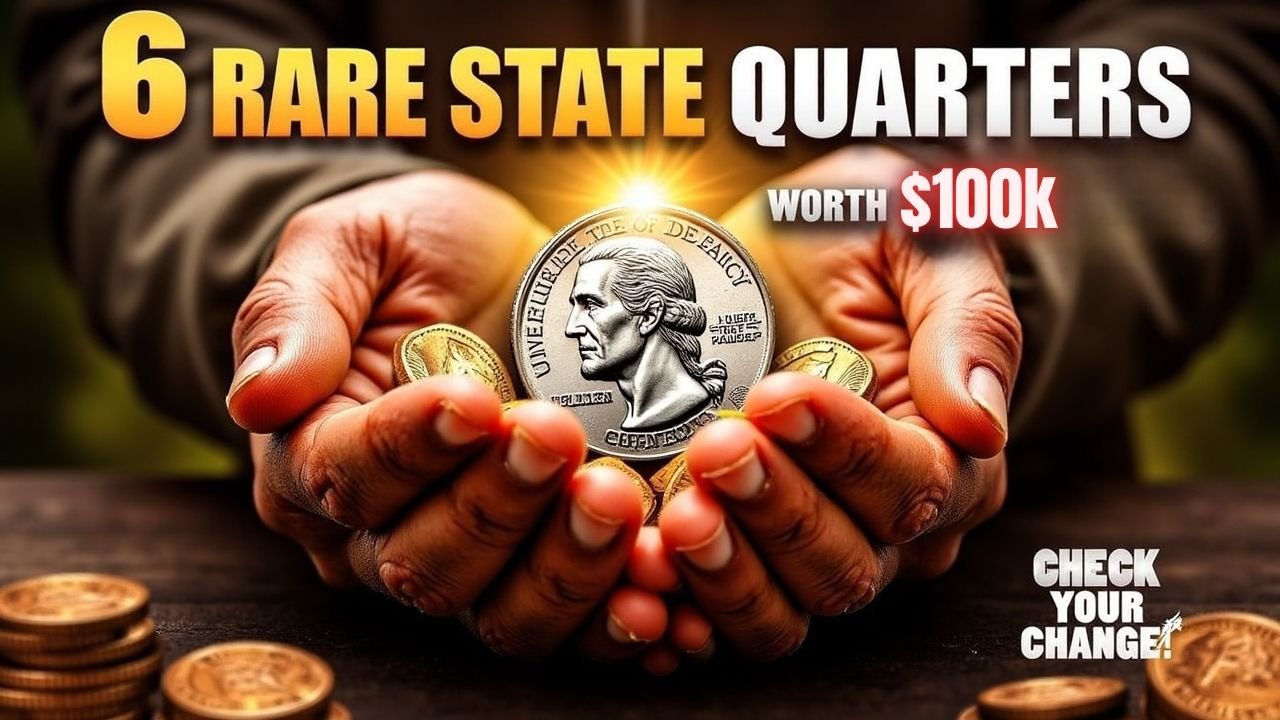Ever since the 50 State Quarters Program was started in 1999, these coins have formed quite a numismatic part of history in the U.S. While most quarters will be valued at only 25 cents, rare state quarters can command fantastic amounts at auctions, even reaching sums in excess of $100,000.
There are those who scour the cities in search of these rare treasures. Many among the rarest quarters boast minting errors; others, on the other hand, get entries in the annals of history because of their particular qualities in terms of rarity. Six different very rare state quarters which could well weigh in as a fortune are listed below.
1999-P Delaware State Quarter (Experimental Alloy Coins)
In 1999, the United States Mint played around by making a few Delaware quarters with experimental alloy for the purpose of use on Sacagawea dollars. This resulted in some extremely rare coins, known now to have only a few examples still in circulation.
Key Features:
- Struck on experimental alloy used for Sacagawea dollars.
- Very limited mintage.
- Value:
- High-graded examples of these have been known to fetch in the vicinity of $4,888 in auction.

2004-D Wisconsin State Quarter (Extra Leaf Error)
The extra leaf error is a well-known incident in the 2004-D Wisconsin quarter. The error itself was caused by a grease-filled die, which resulted in the extra leaf appropriately implanted on the reverse side of the coin. The extra leaf is visible on the stalk of corn, and as such, is what makes this coin an alternative.
Varieties:
High Leaf: An additional upright leaf.
Low Leaf: An additional downward-facing leaf.
Value:
Coins can fetch anywhere from $500 to $1,500 depending on the leaf type and condition.
2005-P Minnesota State Quarter (Doubled Die Error)
Certainly the most eye-catching of all errors on the obverse of the 2005-P Minnesota quarter is the doubled die error. This is mostly evident where the word “Minnesota” and the year are minted such that both the letters and numbers are doubled.
Key Features:
Doubled Design on “Minnesota” and Date.
Value: Coins showing the said error may range from $100 to $500, depending on the depth of the doubling and the condition of the coin.
2005-P Kansas State Quarter (Inverted Die Error)
This quarter acquired the structures of the inverted die error because of some mistakes during the minting. Rather than the intended buffalo, a bison was minted from the buffalo nickel design- this coin is a great item for collectors!
Key Features:
Bison from the buffalo nickel design for mixing with buffalo nickel die.
Value:
Depending upon the grade, these rare Kansas quarters have got up to $2,000 at auctions.
2004-P Michigan State Quarter (Extra Leaf Error)
The error for the 2004-P Michigan quarter is the same as the extra-leaf error on the Wisconsin quarter. It is found on the other side of the coin- an additional leaf hangs from the foliage of the original design.
Key Features:
An additional leaf near the corn stalk’s base.
Value:
These quarters fetch very high amounts for good examples, up to $2,000 or more.

2000-P South Carolina Quarter (Error Struck on the Planchet of the Sacagawea Dollar)
A striking error whereby the 2000-P South Carolina quarter was mistakenly struck on a planchet intended for a Sacagawea dollar coin, generating a smaller and lighter coin bearing the South Carolina design but the diameter and weight of the Sacagawea dollar.
Post not found.
Key Features:
Striking on the Sacagawea dollar planchet led to a size discrepancy.
Those coins with such an error are rare and highly coveted, with auction sales reported to reach as high as $100,000.
Though most state quarters are not worth more than face value, the few rare examples such as the ones listed above have become sought-after objects by collectors.
Minting errors and incorrect planchets, along with other abnormalities, give these coins value to those lucky enough to find them.
Serious collectors should keep an eye on these quarters because they may end up being worth far more than just 25 cents. Proper authentication and grading are critical to ensuring that these coins will be sold at maximum value.
FAQS:
What are the identifying features of rare state quarters?
Look for minting errors of the coins, such as extra leaves, doubled dies, or incorrect designs, and pay close attention to the condition of the coin for any other anomalies.
Are these rare state quarters still in circulation?
Yes, most of these rare state quarters have been put into circulation and can be found in regular change.
What should I do when having a slightly bigger suspicion of having a rare state quarter?
In case of a genuine suspicion, get the rare coin graded and certified by an expert to know its actual worth before selling or trading.
